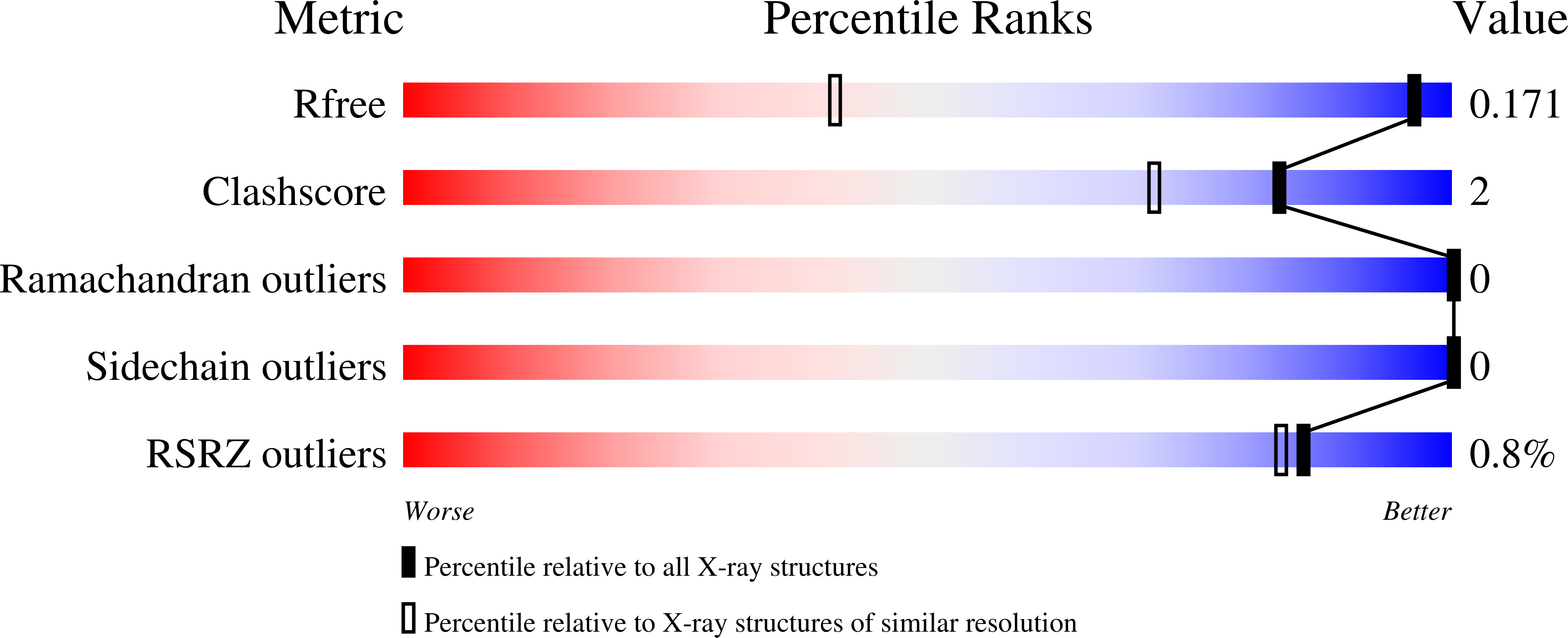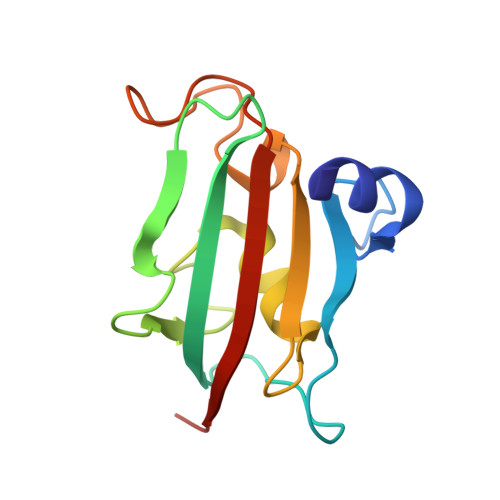Binding pocket stabilization by high-throughput screening of yeast display libraries.
Lerma Romero, J.A., Meyners, C., Christmann, A., Reinbold, L.M., Charalampidou, A., Hausch, F., Kolmar, H.(2022) Front Mol Biosci 9: 1023131-1023131
- PubMed: 36419931
- DOI: https://doi.org/10.3389/fmolb.2022.1023131
- Primary Citation of Related Structures:
7R0L, 8BA6, 8BAJ - PubMed Abstract:
Protein dynamics have a great influence on the binding pockets of some therapeutic targets. Flexible protein binding sites can result in transient binding pocket formation which might have a negative impact on drug screening efforts. Here, we describe a protein engineering strategy with FK506-binding protein 51 (FKBP51) as a model protein, which is a promising target for stress-related disorders. High-throughput screening of yeast display libraries of FKBP51 resulted in the identification of variants exhibiting higher affinity binding of conformation-specific FKBP51 selective inhibitors. The gene libraries of a random mutagenesis and site saturation mutagenesis of the FK1 domain of FKBP51 encoding sequence were used to create a yeast surface display library. Fluorescence-activated cell sorting for FKBP51 variants that bind conformation-specific fluorescently labeled ligands with high affinity allowed for the identification of 15 different protein variants with improved binding to either, or both FKBP51-specific ligands used in the screening, with improved affinities up to 34-fold compared to the wild type. These variants will pave the way to a better understanding of the conformational flexibility of the FKBP51 binding pocket and may enable the isolation of new selective ligands that preferably and selectively bind the active site of the protein in its open conformation state.
Organizational Affiliation:
Institute for Organic Chemistry and Biochemistry, Technical University of Darmstadt, Darmstadt, Germany.

















